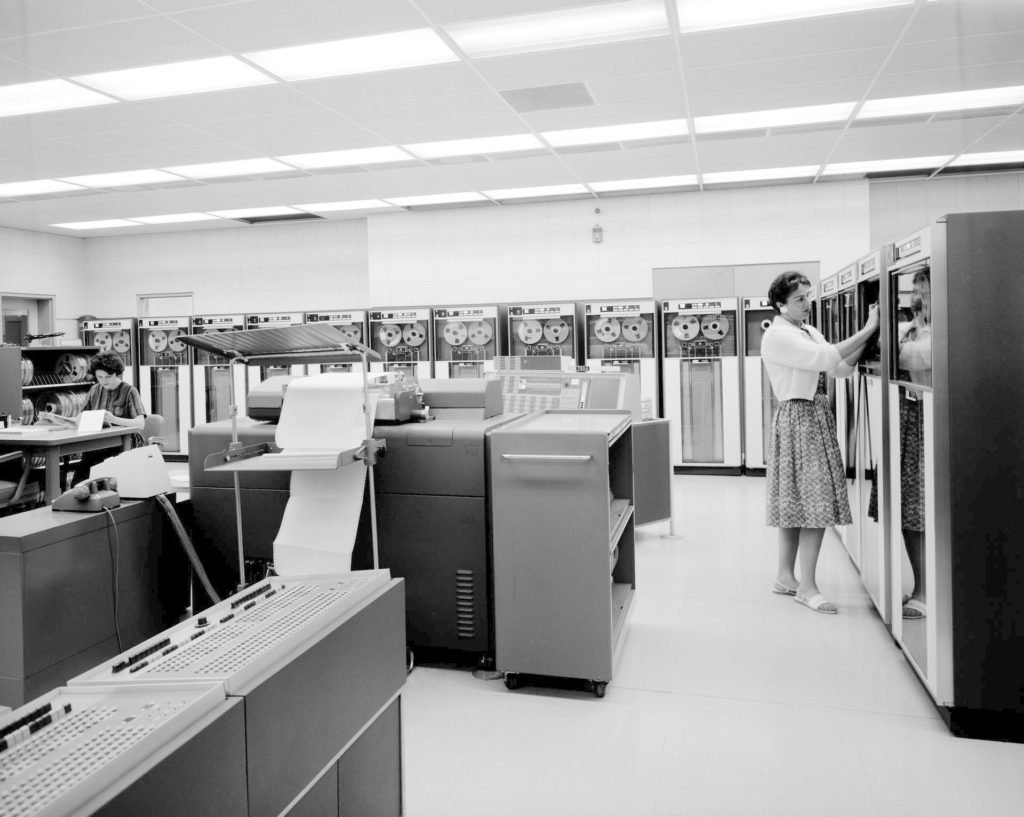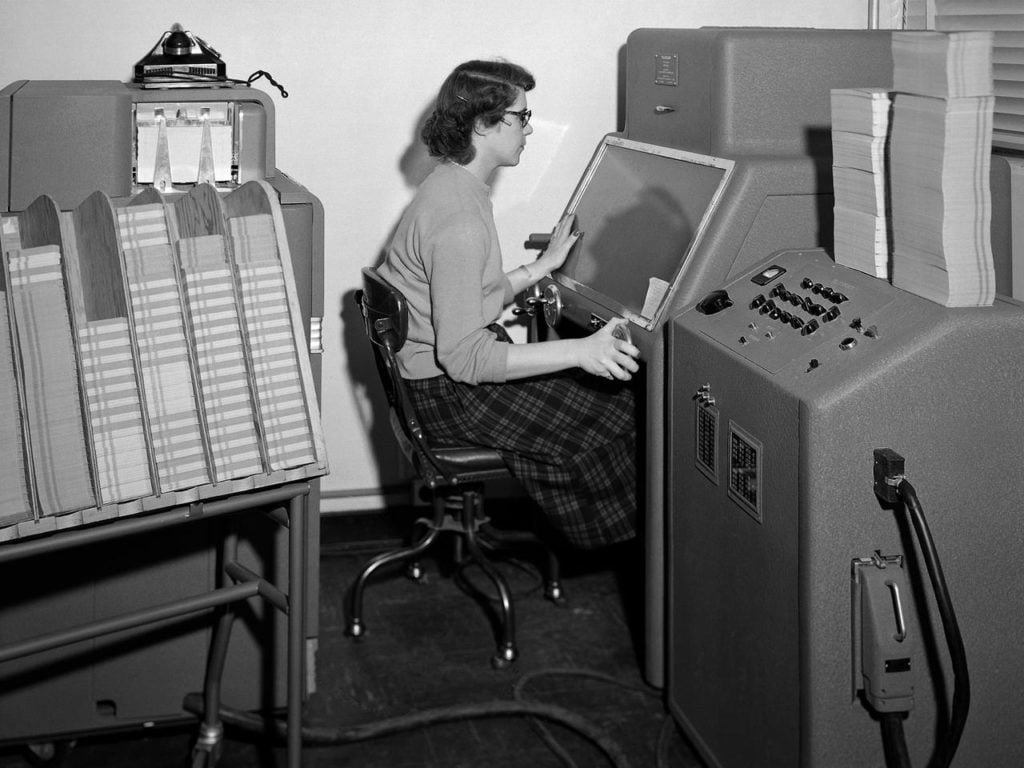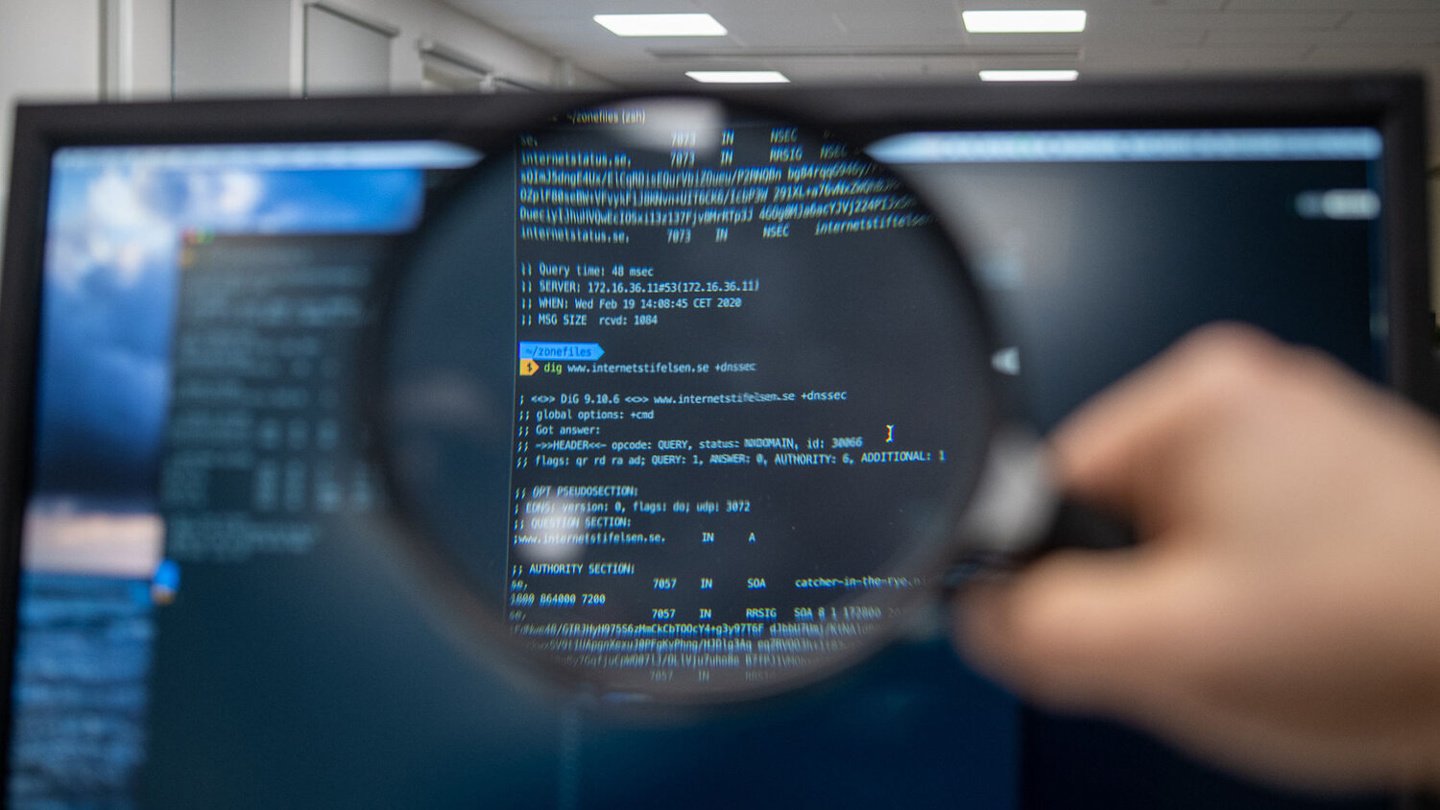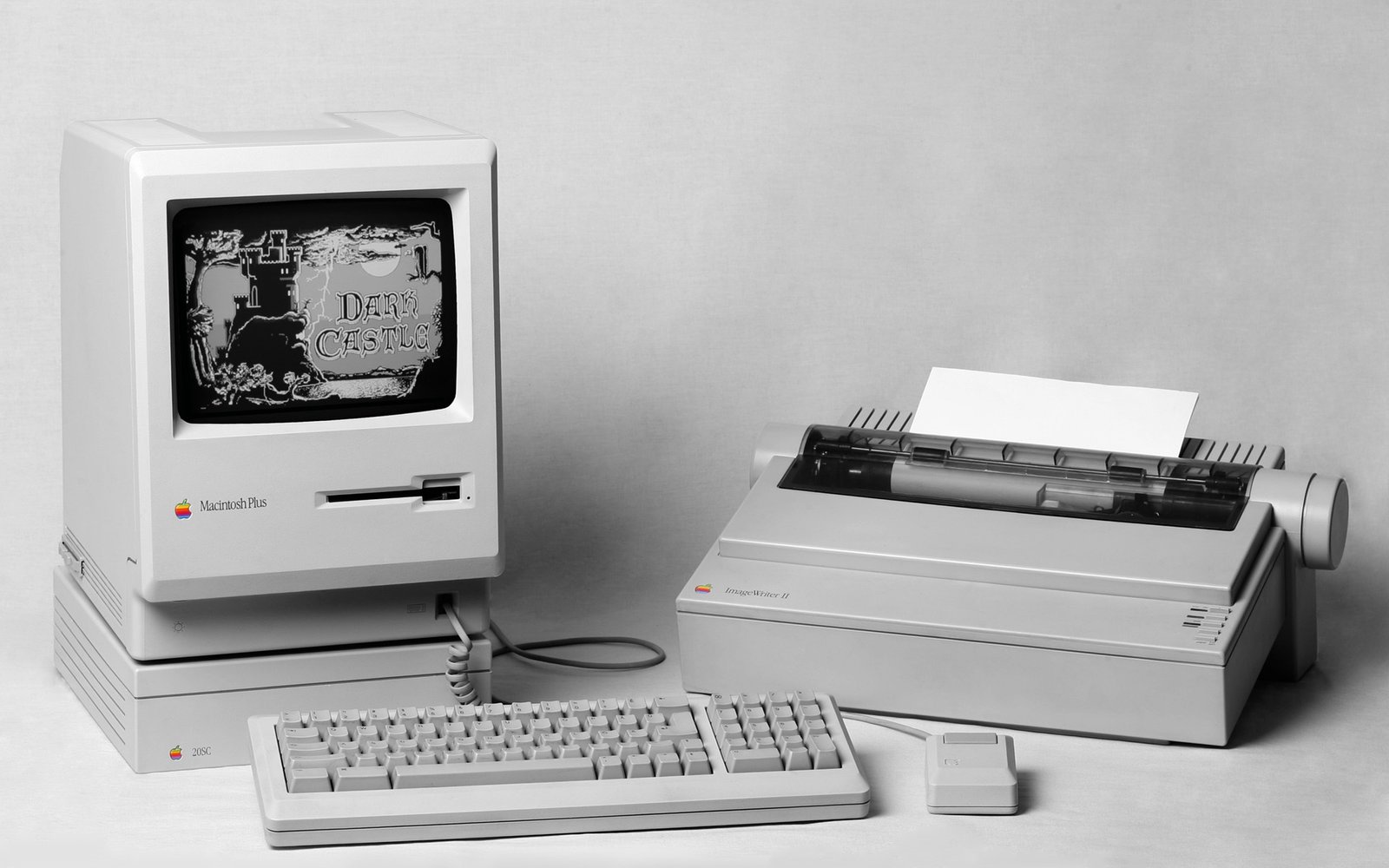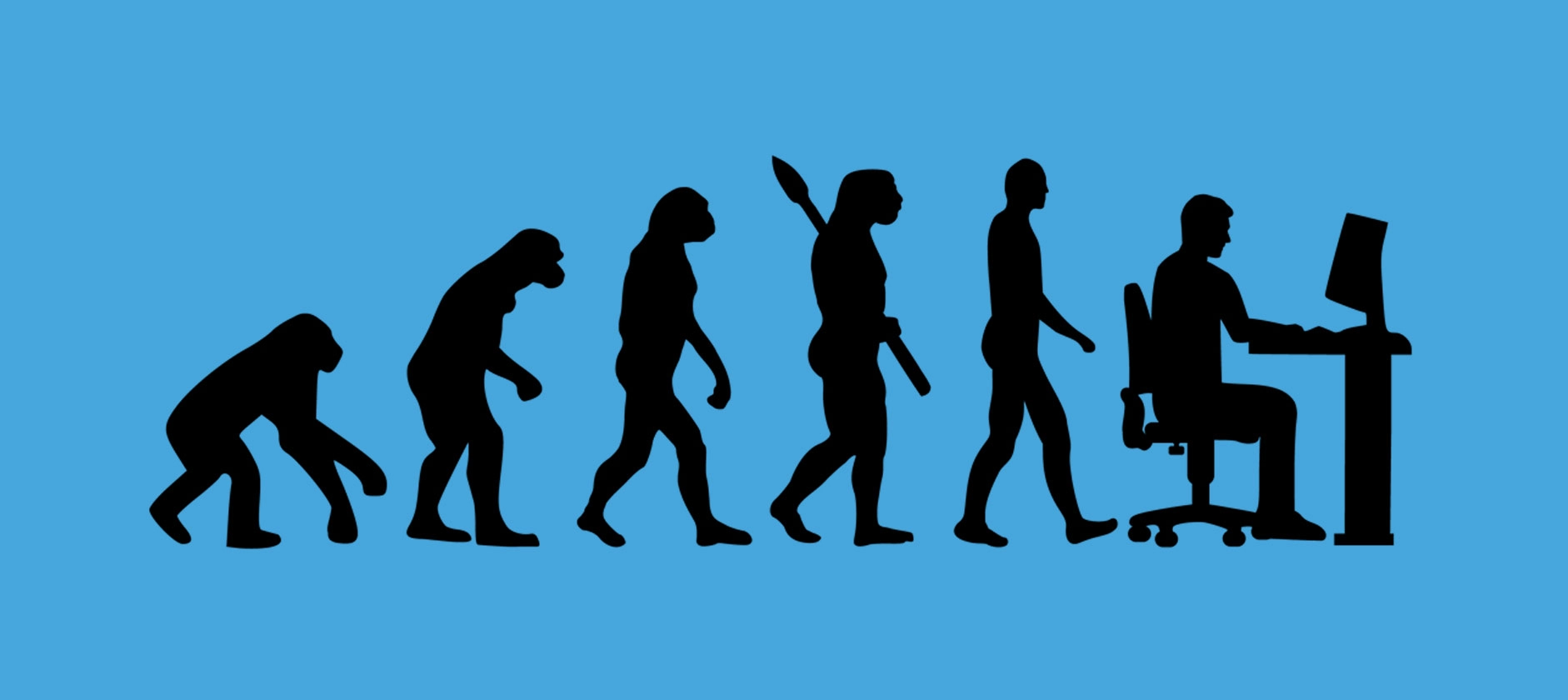The history of computers is a captivating journey through time, marked by remarkable shows and milestones that have fundamentally transformed how we live, work, and communicate. At the heart of this narrative lies the inception of the first computer, ENIAC, which heralded a new era in human technological achievement.
In its early stages, the concept of computers was far removed from the sleek, powerful devices we know today. It traces its roots to the ingenious musings of visionaries like Charles Babbage and his Analytical Engine in the 1830s, which laid the theoretical groundwork for programmable machines. However, the physical manifestation of this concept took decades to materialize.
In 1945, at the University of Pennsylvania, John Mauchly and J. Presper Eckert brought the dream of electronic computing into reality with the Electronic Numerical Integrator and Computer (ENIAC). ENIAC was a towering colossus of technology, occupying an entire room and boasting thousands of vacuum tubes. This mammoth machine, operating at speeds never before imagined, was instrumental in complex scientific and military calculations, including its involvement in developing the hydrogen bomb.
ENIAC’s significance cannot be overstated—it marked the transition from mechanical and electromechanical computing to fully electronic digital computing. Its pioneering architecture and capabilities set the stage for the following computers, and it remains an iconic symbol of technological progress.
As we delve deeper into the history of computers, we will explore the emergence of ENIAC and the subsequent leaps and bounds in computing technology. From UNIVAC I, the first commercially produced computer, to the evolution of microprocessors and the birth of the personal computer, this journey through time showcases the relentless human pursuit of innovation and efficiency.
Join us on this expedition through the annals of computer history as we unravel the stories behind these remarkable machines, their inventors, and their profound impact on our world. In doing so, we will gain a deeper appreciation for the ever-evolving landscape of technology and its pivotal role in shaping our modern existence.
Table of Contents
Which is the first modern computer?
The first modern computer is typically considered the Electronic Numerical Integrator and Computer (ENIAC), which was completed and operational in 1945. ENIAC was a groundbreaking electronic general-purpose computer designed to perform various calculations.
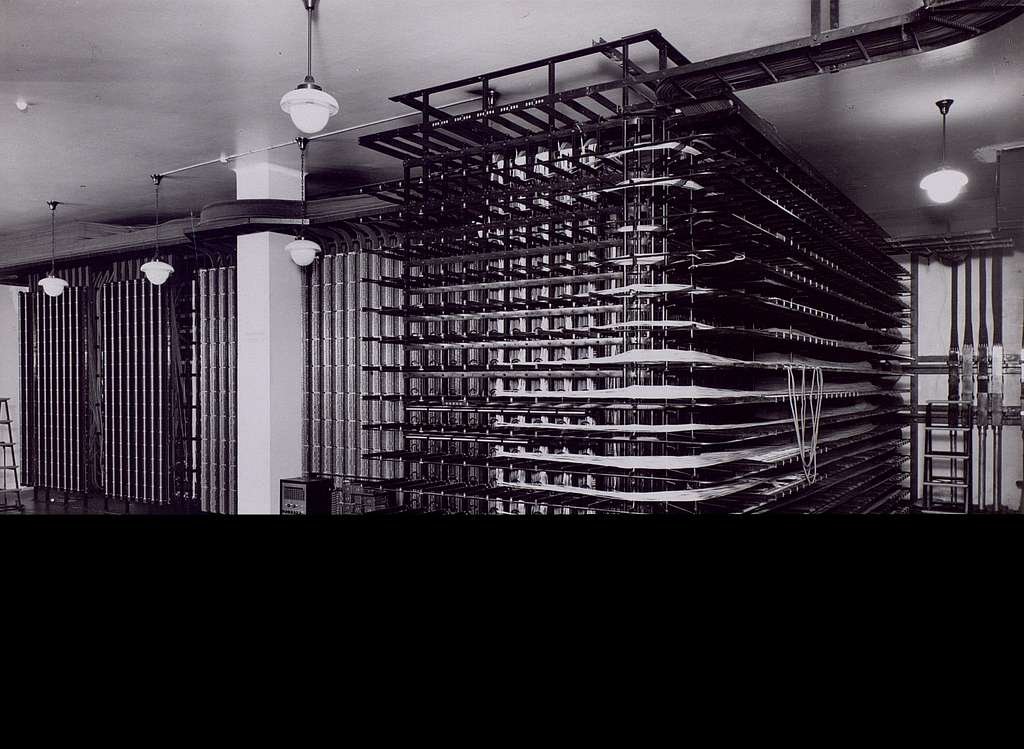
J. Presper Eckert and John Mauchly developed ENIAC at the University of Pennsylvania in the United States. It was a massive machine weighing around 30 tons and filling a large room. Unlike earlier mechanical or electromechanical computers, ENIAC used electronic switches (vacuum tubes) to perform computations much faster, making it significantly more efficient and versatile.
ENIAC was primarily designed for military purposes, precisely to calculate ballistic trajectories for artillery during World War II. It could perform complex mathematical operations like addition, subtraction, multiplication, division, and square roots.
Following ENIAC, there were other significant developments in computer technology, including the Universal Automatic Computer (UNIVAC), which was the first commercially produced computer. These early computers laid the foundation for the development of modern computing devices and technologies, setting the stage for the digital revolution and the rapid advancements in computing that followed in the latter half of the 20th century.
What is Charles Babbage famous for?
Charles Babbage (1791-1871) is famous for his pioneering work in computer science and is often regarded as the “father of the computer.” He is best known for conceiving and designing the Analytical Engine, a mechanical general-purpose computer precursor to modern computers.
Babbage’s Analytical Engine, conceived in the early 1830s, was a remarkable invention that featured several key elements found in today’s computers. It had an arithmetic logic unit, control flow through conditional branching and loops, and memory in the form of punch cards. It was programmable, which meant it could be instructed to perform various tasks by changing the punched cards, making it the world’s first programmable computer.
While Babbage was unable to build a fully functional Analytical Engine during his lifetime due to the era’s technological limitations, his groundbreaking ideas laid the foundation for the development of modern computing machines. His work inspired later computer pioneers like Ada Lovelace, who wrote the first algorithm for implementation on the Analytical Engine.
Charles Babbage’s contributions to computer science have had a profound and lasting impact, shaping how we think about computation and paving the way for the digital age we live in today. His visionary ideas and designs are celebrated as landmarks in the history of technology and innovation.
Unveiling the Journey of Computer Evolution
The invention of the first computer is a complex and debated topic, as the concept of a “computer” has evolved significantly over time. The term “computer” originally referred to a human who performed mathematical calculations, and mechanical devices were developed to aid these calculations. However, if we’re discussing the first electronic digital computer, there are several key milestones:
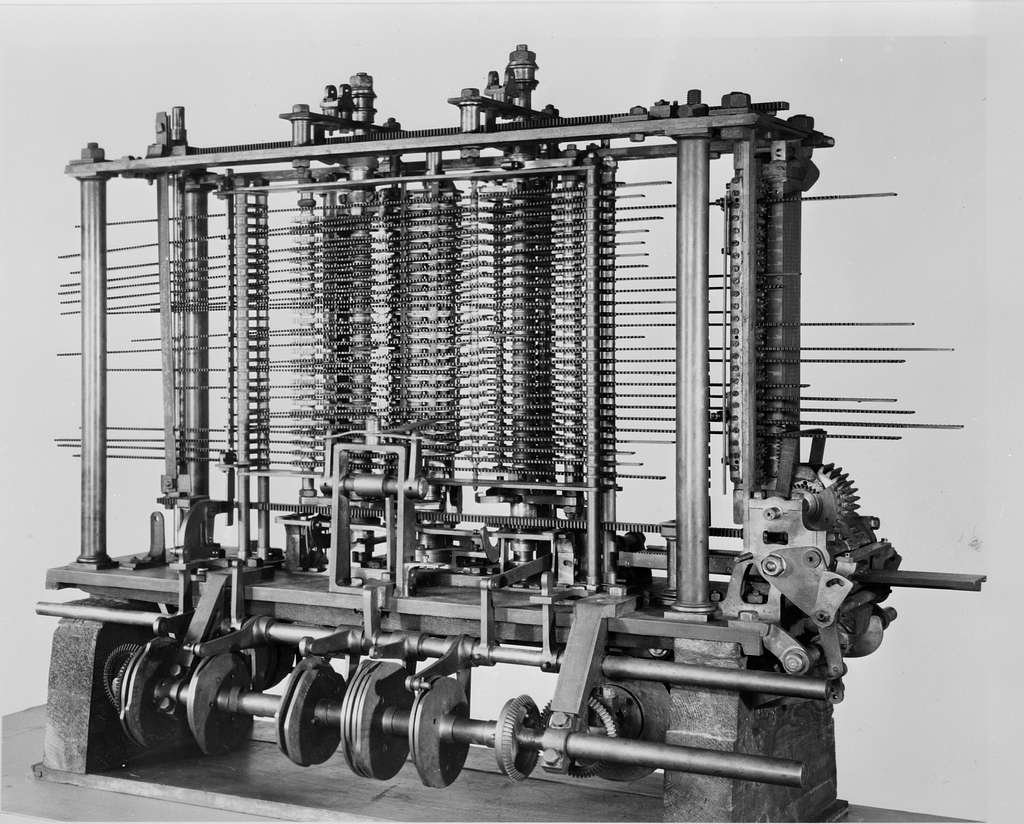
Charles Babbage’s Analytical Engine (1837-1842)
Charles Babbage’s pivotal role in the history of computing cannot be overstated. As an English mathematician and visionary inventor, he is rightfully regarded as the “father of the computer.” During the 1830s, Babbage conceived a groundbreaking concept known as the Analytical Engine. This mechanical marvel was far ahead of its time, as it was designed to be a general-purpose computer with unprecedented capabilities.
While the Analytical Engine remained a dream unrealized in Babbage’s lifetime due to technological limitations, its blueprints and theoretical underpinnings were revolutionary. Babbage’s ingenious design incorporated concepts that foreshadowed the modern computing landscape, including a central processing unit (CPU) responsible for executing instructions, a memory system for storing data, and the ability to carry out stored programs.
Babbage’s visionary ideas laid the very foundation upon which the edifice of modern computing was constructed. His pioneering work ignited a spark that would ultimately lead to the development of electronic computers, shaping the course of human progress and innovation in ways he could scarcely have imagined. Charles Babbage’s legacy inspires generations of computer scientists and engineers who continue to push the boundaries of technological possibility.
Konrad Zuse’s Z3 (1941)
The Z3, a brainchild of German engineer Konrad Zuse, stands as a pioneering marvel in the realm of computing. Crafted during a time overshadowed by World War II, the Z3 was the world’s inaugural electromechanical, programmable computer. Its groundbreaking innovation lay in utilizing telephone switching equipment to execute complex calculations. Although its existence was known predominantly in Germany during the wartime era, its potential and ingenuity were unparalleled.
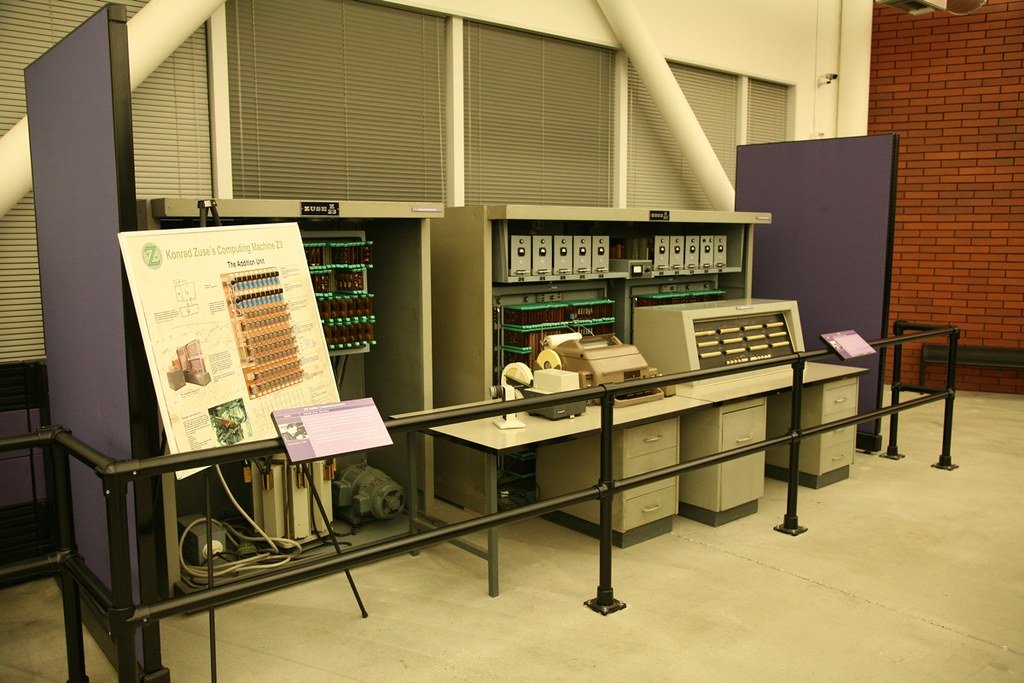
The Z3 showcased the vital shift from manual calculation to automated computation, setting a precedent for the technological trajectory that would soon redefine the future. Konrad Zuse’s invention paved the way for subsequent advancements, fuelling a global revolution in computing that transcended borders and propelled humanity into the digital age.
Colossus (1943)
During World War II, amidst the chaos and secrecy of the conflict, British engineer Tommy Flowers and his brilliant team undertook a covert mission of monumental importance. They began constructing the Colossus, a groundbreaking electronic digital computer, with a singular objective: to decrypt encrypted German messages, particularly those encoded by the infamous Lorenz cipher machine.
Colossus, a towering and imposing machine, was a technological marvel of its time. It utilized thousands of vacuum tubes and a complex system of switches and circuits to perform cryptographic operations at unprecedented speeds. What set Colossus apart was its programmability, a pioneering concept that allowed it to adapt to changing encryption methods by altering its instructions.
This programmability and immense computing power enabled Colossus to decipher encrypted German communications remarkably efficiently. Its contributions were invaluable in providing the Allies with vital intelligence, significantly impacting the war’s course. Colossus remains a testament to human ingenuity and determination, playing a pivotal role in the history of computing and the Allied victory during World War II.
ENIAC (1945-1946)
The Electronic Numerical Integrator and Computer (ENIAC), an iconic milestone in the history of computing, is widely acclaimed as the world’s first fully electronic, general-purpose digital computer. Conceived and developed by the brilliant minds of J. Presper Eckert and John Mauchly at the University of Pennsylvania, ENIAC emerged during the mid-1940s as a colossal marvel of technology.
ENIAC’s sheer scale was staggering, encompassing thousands of vacuum tubes that served as the electronic switches for its calculations. It occupied an entire room, consuming substantial electrical power. Its primary function was to perform complex mathematical and scientific computations with unparalleled speed and precision, a task that would have been incredibly time-consuming for human mathematicians.
ENIAC’s significance extended far beyond its massive size and computational prowess. It played a pivotal role in various scientific endeavors, including calculations for atomic energy research, ballistic trajectory calculations during World War II, and weather prediction. The machine’s versatility as a general-purpose computer laid the foundation for future computing technologies, paving the way for the modern digital age. ENIAC stands as a testament to human ingenuity, ushering in an era of electronic computing that has since reshaped virtually every aspect of our lives.
EDVAC (1949)
The Electronic Discrete Variable Automatic Computer (EDVAC) represents a pivotal moment in the history of computing. Developed by John Mauchly and J. Presper Eckert, the same brilliant minds behind ENIAC, EDVAC was a groundbreaking innovation that forever altered the landscape of computer architecture.
One of EDVAC’s most significant contributions was introducing the concept of “stored programs.” Unlike its predecessor, ENIAC, which required manual rewiring to change its functions, EDVAC allowed instructions to be stored in its memory. This breakthrough not only greatly enhanced the computer’s flexibility but also laid the cornerstone for the architecture of modern computers.
With the ability to store and execute instructions from memory, EDVAC heralded a new era of computing, making it possible for users to program the machine to perform a wide range of tasks. This concept of a “stored program computer” became the foundation for the von Neumann architecture, the basis for most contemporary computer systems. This architecture stores data and program instructions in the same memory, enabling more efficient and versatile computation.
EDVAC’s pioneering work paved the way for subsequent advancements in computer technology, including developing high-level programming languages, creating operating systems, and evolving microprocessors. Its legacy endures in the computers we use daily, as it was instrumental in shaping the modern digital age by providing a blueprint for how computers could be programmed and operated.
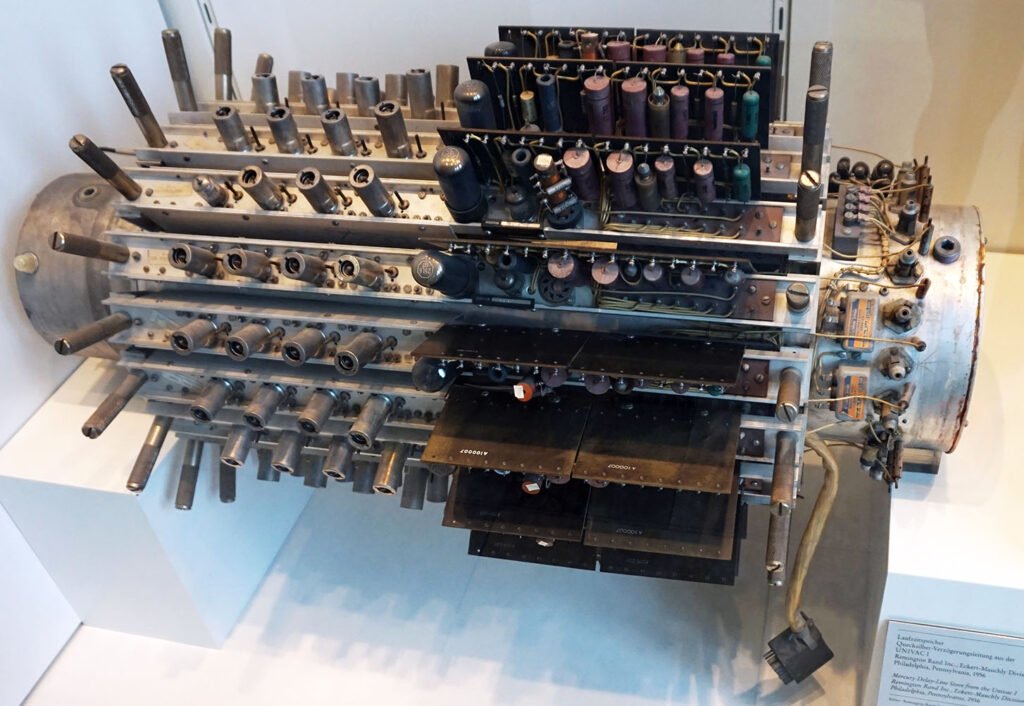
UNIVAC I (1951)
The Universal Automatic Computer (UNIVAC I), another groundbreaking creation by the visionary duo of John Mauchly and J. Presper Eckert, is a pivotal milestone in the history of computing. In 1951, UNIVAC I made history as the first commercially produced computer, marking a crucial transition from experimental machines to practical, business-oriented applications.
This behemoth of a machine was not merely a technological marvel; it was a versatile workhorse. UNIVAC I found itself at the forefront of scientific research, enabling complex calculations that were previously inconceivable. Simultaneously, it played a vital role in the business world, revolutionizing data processing and ushering in a new era of automation.
In the business arena, UNIVAC I demonstrated its prowess by handling various tasks, including payroll calculations, inventory management, and weather forecasting. Its exceptional speed and accuracy brought about a paradigm shift in how companies managed their data and operations, setting the stage for the modern era of information technology.
As we trace the evolution of computers, UNIVAC I occupies a prominent place, not just as a machine of historical significance but as a harbinger of the digital age. Its legacy endures as a symbol of innovation, laying the groundwork for the vast array of computers and technologies that have since reshaped our world.
The history of computers is not a linear progression but a mosaic of collaborative efforts by countless innovators worldwide. It’s essential to acknowledge that the evolution of computers resulted from collaborative endeavors, where ideas, innovations, and breakthroughs were shared across borders. Moreover, the definition of a computer has evolved from mechanical devices like Babbage’s Analytical Engine to electronic marvels like ENIAC.
This evolution defies a simple “first” computer designation, as different machines served distinct purposes and contributed to the rich tapestry of modern computing. Thus, the quest to pinpoint the initial computer becomes a matter of perspective, influenced by specific criteria and historical context.



